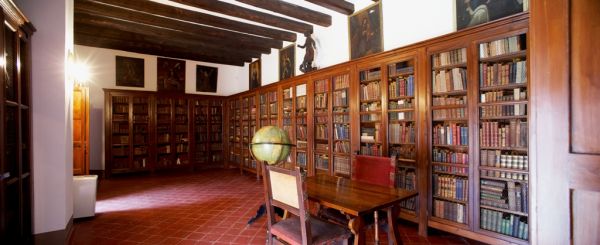In 1911,
Eduard Toda, a native of Reus and a consul, historians, writer, Egyptologist and bibliophile, purchased the former
monastery of Sant Miquel d’Escornalbou in order to refurbish it. Many of the leading figures of the
Renaixença, or Catalan Renaissance, passed through its rooms where today you can see examples of the
collections Toda made during his
journeys and stays in such places as Macau, Hong Kong, Shanghai and Egypt.
Today a visit to
Escornalbou offers a glimpse of what it must have been like to live in
grand mansion during the early
twentieth century. Additionally, Toda conserved some important elements of the former
church and
cloister, which command an impressive view over the districts of Tarragona.
While you are there you shouldn't miss:
THE SARRAÍ SPRINGA 10-minute walk from the house will take you to the
Sarraí Spring. The Spring has now run dry but it was here that, according to
legend, a Saracen, the son of a local emir, and a Christian, the wife of the governor of Escornalbou, fell in love. According to the legend the lovers escaped on horseback and the horse led them up a track to the place now known as
Salt del Dimoni (Devil's Leap), where it stopped and jumped into the void. It is said that the devil dragged the bodies of the two lovers off to hell, along with that of the horse, because they were never found.
THE FRIARS' WAYThis pathway was opened up around
1818 with two purposes in mind: to
provide stone for the extension of the convent, and to create a
place of leisure for the friars. It has magnificent
panoramic views that include Hospitalet to the
mountains of Prades, and from El Garraf on the river Ebre, to the coast. There are days when you can even see
Mallorca on the horizon. Halfway up you will find the Tres Verges hermitage.
SANTA BÀRBARA HERMITAGEHaving seen the magnificent
panoramic view that can be obtained from this, the
highest peak of Escornalbou, it will come as no surprise to discover that this hill has been occupied since prehistoric times because it was a perfect location for
dominating the entire area surrounding it. The hermitage, which dates from the 17th to 19th centuries, is dedicated to
Santa Bàrbara, the protector against
thunderbolts and storms, who protected those living in the monastery and the people living nearby.
Have we managed to inspire you? If you have any other interesting suggestions please send them to us on Facebook or publish your photos on Instagram with the hashtag #patrimonicultural 

